With a crocodile close to the south coast (see ‘Explore!’ February 2010), and a whale lurking off the north coast, Crete is not exactly the safest place in the world for sea-kayaking. You didn’t know about the whale? Well, once upon a time, O best beloved, and long, long ago, this enormous sea-monster was heading towards Crete, intent on swallowing the island whole. Fortuitously, and only just in time, the Greek gods spotted it, and instantly turned it into stone, when it became the island of Ag Theodorou, just offshore from Platanias, and 7 km WNW of Chania.
We chose one of Crete’s 300 sunny days a year – this one at the very end of November – to circumnavigate the islands by kayak. Plural here, because there are two, the smaller rocky islet of Ag Theodoropoula being largely hidden from the coast. Launching from Platanias, we set off on the 1.8km crossing to the island on the calmest sea imaginable. Still waters usually run deep, but the sea bed was visible below us all the way over, a leisurely half hour paddle.
In 1930 Ag Theodorou was designated a wildlife sanctuary, and home to the famous wild goats or “kri-kri” ; in 1935 one male and two females were brought from the Samaria Gorge and released here, and have since procreated, the herd now around eighty. It’s also the habitat of several raptors, safe from Greek hunters.
Like most of Crete the island has a long history. Remains found in the enormous cave suggest it was a site for Minoan worship ; centuries later (in 1583) the Venetians turned the island into a fortress against the threat of piracy and Turkish invasion (and similar to Gramvousa island, it held out against the Turks long after the Cretan mainland had fallen.) Access is (officially) prohibited except on the Saint’s Day in June, and even then, on paths limited from the shore up to the church.
Nearing the small beach and jetty, we tried to make out the words on a rusting notice, and when 50m away, could decipher them : “No approaching to 100m from the beach.” But we made a brief landfall, stretched legs, then set off around the SW tip of the island, below the huge cave which is the eye of the whale from some aspects. Cliffs fall sheer into the sea from the island’s high point of 165m, with cormorants nesting in crevices and small ledges.
The strait between the two islands is a narrow channel measuring c.30m across. We paddled carefully through, watchful for sharp rocks below us either side, then anti-clockwise around Theodoropoula, where a landing looks almost impossible. To our north lay nothing but open sea until Athens, some 250km distant, reminding me of the Breton fishermen’s prayer :
“O Lord, the sea is so great, and my boat is so small.”
Through the strait again, then keeping close to the north and south-east cliffs, watching for ‘kri-kri’ on the rocks above us, and spotting three males, larger than imagined, looking down on us as we looked up at them. An hour or so and 5km after leaving it, we were back at the beach, this time for a picnic lunch and rest in the sunshine. But, as we used to sing in school assemblies years ago : ” Not for ever by still waters, would we idly rest and stay …”
Phil had driven from Platanias to the small harbour at Kato Galatas, where we had arranged to end our voyage. Ag Theodorou receded behind us on our 4km return to the mainland, leaving us with memories of a fine day, and the thought that, to misquote Psalm 107 :
” They that go down to the sea in kayaks, that go paddling in great waters ;
these see the works of the Lord, and his wonders in the deep. “

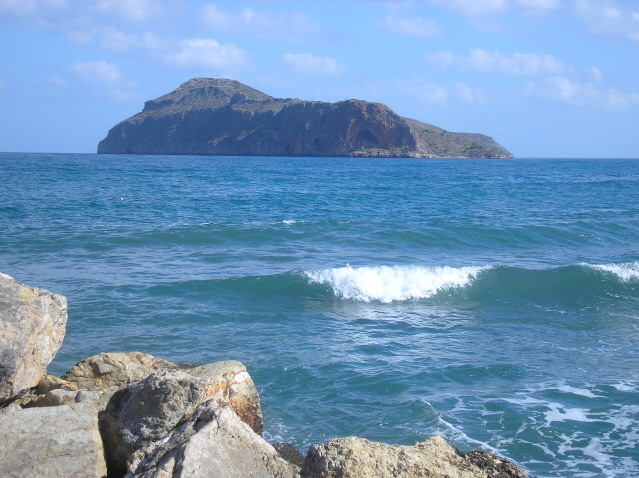
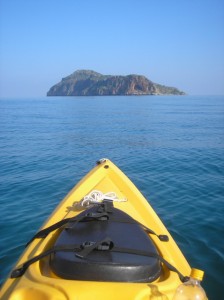
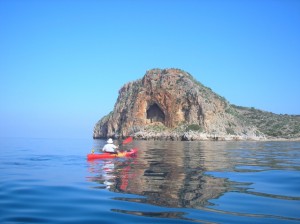
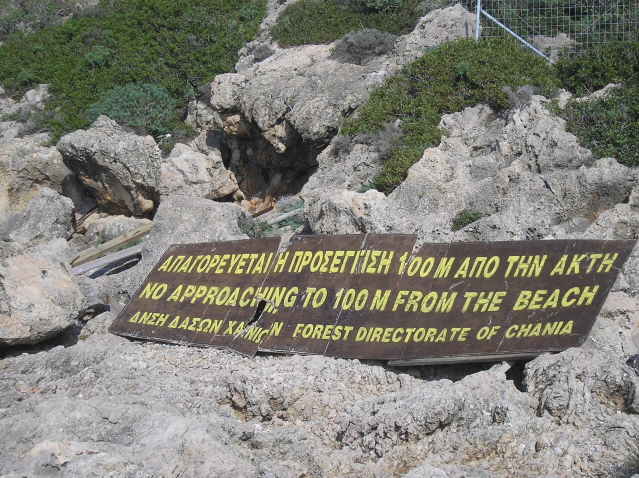
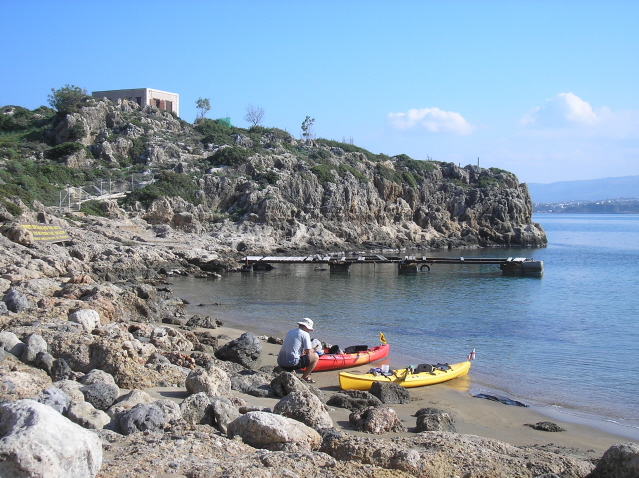
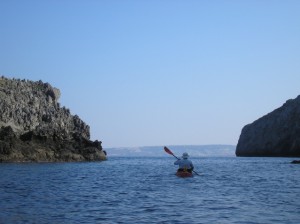
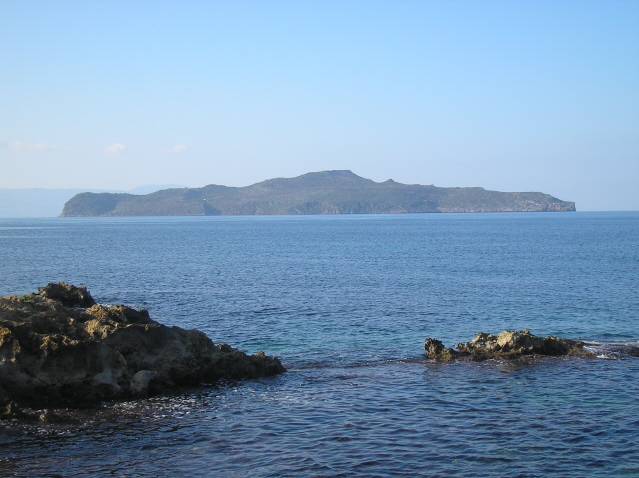

Recent Comments